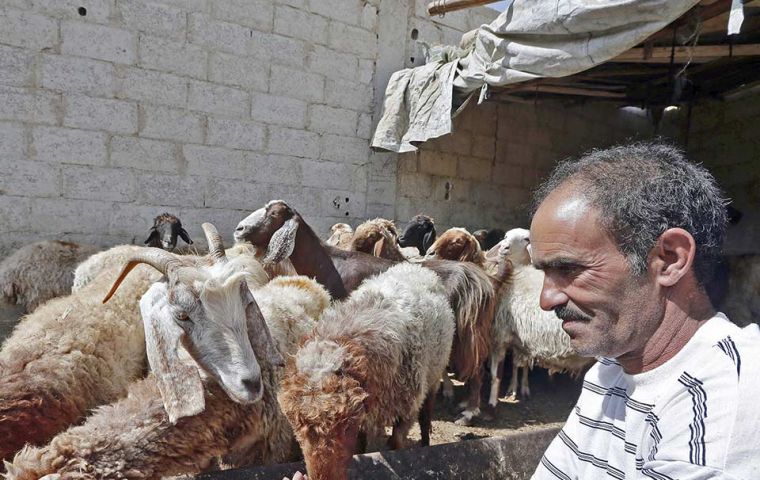MercoPress. South Atlantic News Agency
FAO, OIE, and WHO launch One Health approach guide to addressing zoonotic diseases
 Zoonotic diseases – those diseases that can spread between animals and people – continue to have major impacts on human health.
Zoonotic diseases – those diseases that can spread between animals and people – continue to have major impacts on human health. Zoonotic diseases continue to be a threat to global health, causing millions of deaths and economic losses every year. To support countries to control these diseases, the Tripartite organizations (FAO, OIE and WHO) launched a guide entitled ‘Taking a Multisectoral, One Health Approach: A Tripartite Guide to Addressing Zoonotic Diseases in Countries’.
Zoonotic diseases – those diseases that can spread between animals and people – continue to have major impacts on human health. Every year, nearly 60 000 people die from rabies, and other zoonotic diseases such as avian influenza,
Ebola or Rift Valley fever constitute additional threats. These diseases do not only affect human health, but also animal health and welfare, causing lowered productivity (milk or egg quality and safety, etc.), or death, and consequently affecting farmers’ livelihoods and countries’ economies. Diseases know no borders. As global trade and travel expands, zoonotic diseases are increasingly posing concerns worldwide. Every day, new health challenges emerge at the human-animal-environment interface. To face these threats, collaboration, coordination, communication, and concerted action between different sectors are needed, using a multisectoral, One Health approach. However, many countries lack the capacity to implement such collaboration.
To support countries in filling these gaps, the Food and Agriculture Organization of the UN (FAO), the World Organization for Animal Health (OIE), and the World Health Organization (WHO) today launched a guide entitled ‘Taking a
Multisectoral, One Health Approach: A Tripartite Guide to Addressing Zoonotic Diseases in Countries’. This guide, referred to as the Tripartite Zoonoses Guide (TZG), provides principles, best practices and options to assist countries in achieving sustainable and functional collaboration at the human-animal-environment interface. It is flexible enough to be used for other health threats; for example, food safety and antimicrobial resistance (AMR). By using the TZG and its associated operational tools (which are currently being developed) countries can build or strengthen their national capacities in:
• Multisectoral, One Health coordination mechanisms
• Strategic planning and emergency preparedness
• Surveillance and information sharing
• Coordinated investigation and response
• Joint risk assessment for zoonotic disease threats
• Risk reduction, risk communication, and community engagement
• Workforce development
Options for monitoring and evaluating the function and impact of these activities are additionally included to support countries in their efforts to make improvements in their zoonotic disease frameworks, strategies and policies. Moreover, taking the One Health approach presented in the TZG helps countries to make the best use of limited resources and reduces indirect societal losses, such as impacts on livelihoods of small producers, poor nutrition, and restriction of trade and tourism.
By working collaboratively across sectors and disciplines, human and animal lives are saved, livelihoods are secured, and our global health systems are improved in a sustainable way. The Tripartite organizations encourage countries to use the TZG to achieve these goals by taking a One Health approach to address zoonotic diseases.




Top Comments
Disclaimer & comment rulesCommenting for this story is now closed.
If you have a Facebook account, become a fan and comment on our Facebook Page!